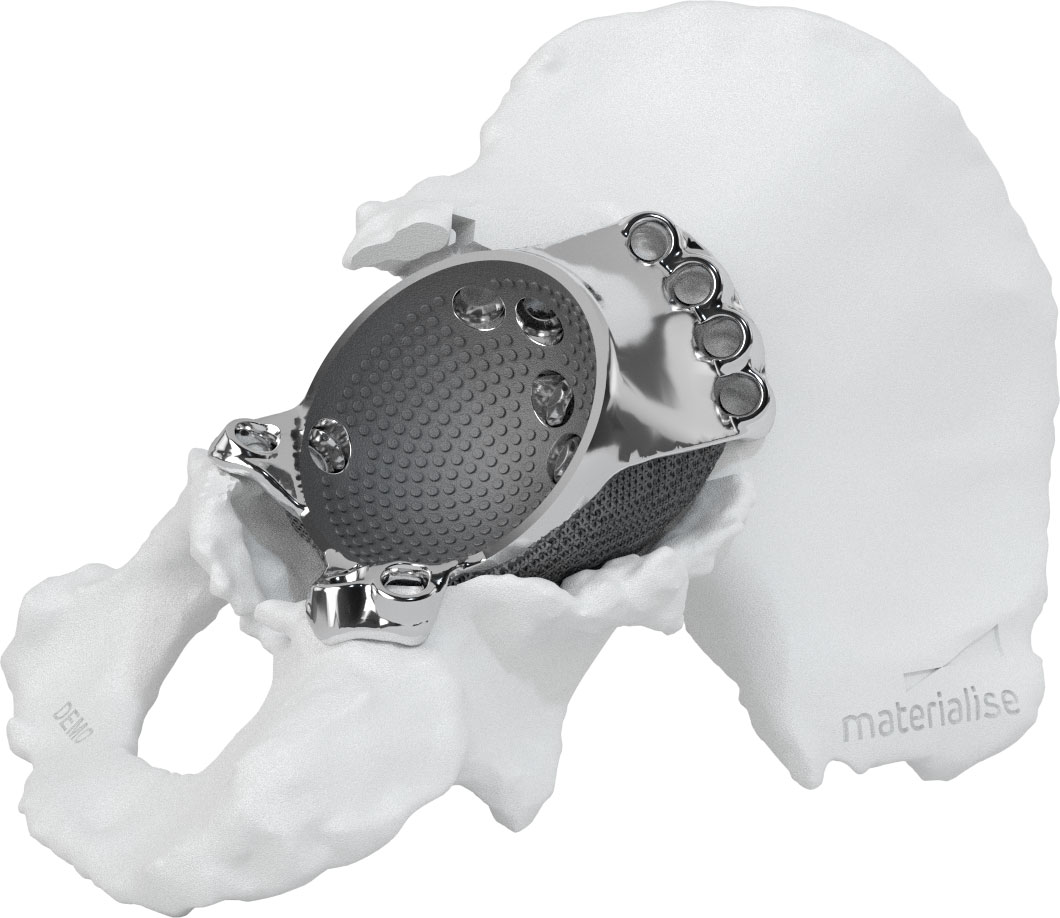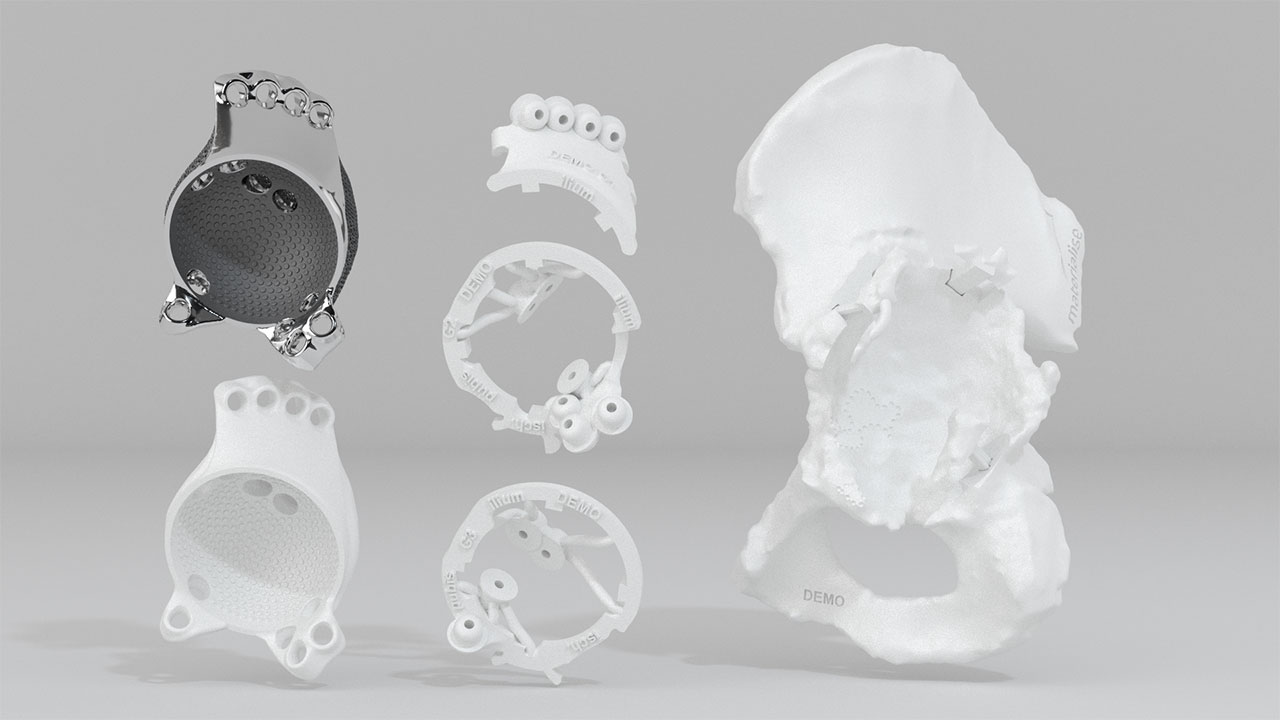
Douglas G Dunlop MD FRCSEd(Tr&Orth) FRCS MB BCh, Consultant Orthopaedic Surgeon, Honorary Professor of Orthopaedics, University of Southampton, who performed the surgery
At the age of 81, the patient was suffering from a Paprosky type 3B acetabular defect and already underwent hip revision surgeries prior to seeking the help of Mr. Dunlop. He is not alone, because data from joint registries show that 27% of the revisions is not an initial one and those re-revisions have a 3 times higher chance of failure compared to initial revisions. The previous revision reconstruction of this particular patient (cemented PE liner with cranial metal mesh) failed due to loosening of the cup and migration to the postero-cranial region. This resulted in a limited amount of bone stock, particularly in the postero-cranial region, which poses challenges towards creating a stable and lasting reconstruction of the acetabulum.
The value of 3D Planning and a 3D-Printed Hip implant
3D printing makes it possible to create very specific and complex shapes. This is, therefore, an ideal technique to design an implant that fully matches the patient anatomy. The intricate porous structure on the back of the aMace implant, that enables bone ingrowth, is another feature that can easily be achieved using 3D printing.
Collaborating with the Materialise Clinical Engineers, Mr. Dunlop was able to carefully plan his surgery upfront and design a 3D printed aMace hip implant to achieve the desired mechanical reconstruction and fixation, tailored to fit the defect. Before surgery, the plastic bone model and implant trial served as a reference for the surgeon to prepare the site and position the implant correctly.
The drill guides were used to place the screws in the planned position. The implant itself reconstructed the center of rotation to the desired location and orientation, and provided enough support even with the limited bone (especially in the posterocranial region). The patient received the plastic model of his bone after the surgery, which he used intensively to explain his solution to friends and family, says his proud daughter:
“My Dad is proudly showing off the model of his hip to friends and family.”
The planning and the custom fit was the added value of the solution, as both result in a stable reconstruction even with the missing bone supero-cranially. The outcome was a successful revision and a satisfied patient who regained his independency according to his daughter:
“My Dad's quality of life has improved beyond measure, the closest he can get to describing it is to say that a big lottery win could not make him happier!”
A study of Mr. Tack, Health Researcher at the Ghent University, underlines that the aMace implant can be highly costeffective because it addresses the complications leading to further revisions compared to other systems. The aMace solution prevented any further revisions for this patient so far.
“All who know Dad and the severe debilitation he experienced prior to his 3D surgery are amazed by the transformation; he looks 20 years younger and has regained his independence. For me as a daughter, it is lovely to hear my Dad singing and whistling again.”
Enhance Patient Care with a patient-specific hip implant
Materialise offers 3D printing software and services, such as the patient-specific aMace hip implants.
When presented with bone defects, an aMace patient-specific implant is a unique way to match the medical considerations with the complex mechanical requirements of such an important moving part in the human body. It all starts with a CT scan. This allows the surgery to be properly planned, right down to finding the specific fixation points.
Each Materialise aMace implant comes with extensive 3D analysis. The thorough planning, together with the guides and models will help you to successfully perform your surgery. These services are based on the in-house expertise earned over more than 500 hip implants.



For more information please contact your account manager at: medical@materialise.com or visit: www.materialise.com/aMace
aMace is not commercially available in the US and Canada.
